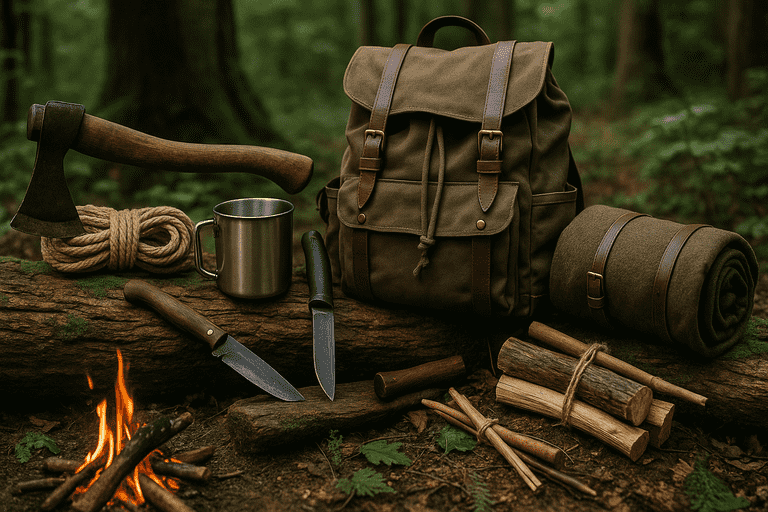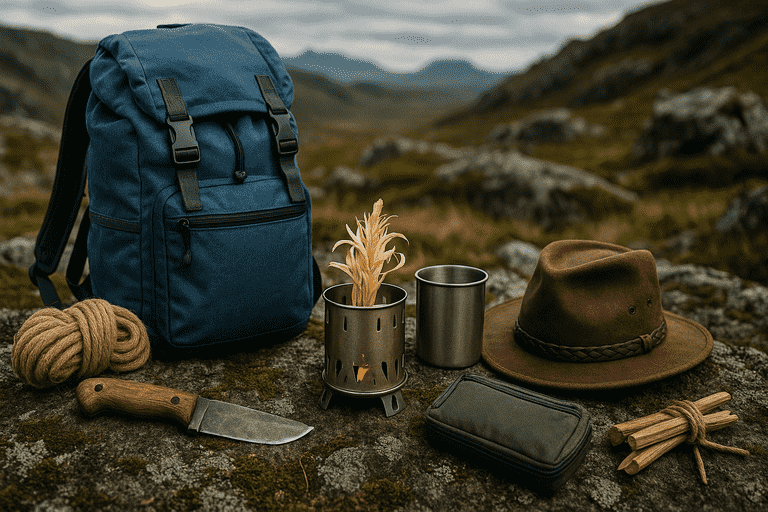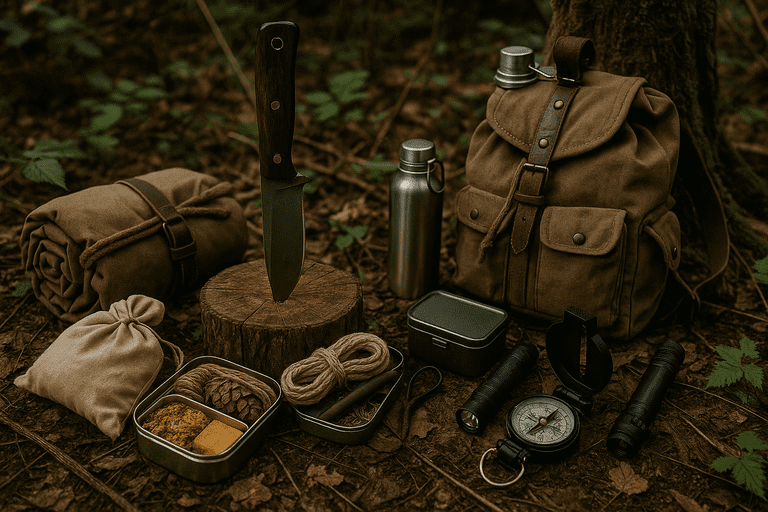Venturing into the wilderness offers a unique challenge: to survive and thrive using only the skills and tools at your disposal. For those drawn to the raw simplicity of nature, having the right bushcraft survival gear is essential. It’s not just about convenience—it’s about safety, efficiency, and long-term sustainability in remote environments.
Why Bushcraft Survival Gear Matters for Every Outdoor Enthusiast
When nature strips away the comforts of modern life, your survival depends largely on your equipment. Bushcraft survival gear equips you with the means to build shelter, create fire, purify water, hunt or forage food, and navigate the terrain effectively. The idea is not to carry the most gear—but the most versatile gear that can serve multiple purposes and withstand the rigors of harsh environments.
This discipline encourages minimalist efficiency. Instead of packing ten items, a seasoned bushcrafter chooses five that can do the job of twenty. Whether you’re preparing for a weekend camping trip, a month-long survival trek, or simply want to be ready for emergencies, the gear you bring can make all the difference.

Key Components of Reliable Bushcraft Survival Gear
A comprehensive bushcraft kit focuses on core survival needs: shelter, fire, water, food, and protection. Here are essential items that experienced survivalists rely on:
- Fixed Blade Knife: The centerpiece of your bushcraft kit. It should be full-tang, durable, and capable of cutting, carving, and batoning wood.
- Tarp or Lightweight Shelter: Protection from the elements is critical. A waterproof tarp or compact tent can be life-saving.
- Ferro Rod & Firestarter: A fire steel works in wet conditions and lasts far longer than matches or lighters.
- Water Purification System: Whether it’s a compact filter, purification tablets, or a boiling kit, safe drinking water is non-negotiable.
- Paracord: With countless uses—building shelters, traps, or securing gear—paracord is a must-have in your bushcraft survival gear lineup.
These tools should be selected not just for functionality, but for durability, reliability, and ease of repair or replacement in the field.
Clothing as a Component of Bushcraft Survival Gear
Often underestimated, proper outdoor clothing plays a crucial role in survival. Layering systems made of wool and synthetics (not cotton) help regulate body temperature and prevent hypothermia or overheating. Footwear, gloves, hats, and even your choice of base layer can greatly affect your mobility and comfort in wild settings.
Remember: your clothing is your first layer of shelter. It must be suitable for your environment, and it should support movement, insulation, and protection from wind, insects, and moisture.
Using Bushcraft Survival Gear to Build and Maintain Shelter
In unpredictable weather, a solid shelter can mean the difference between life and death. With the right bushcraft survival gear, building a shelter from natural materials becomes achievable even for beginners. Tools like saws, axes, and cordage let you construct lean-tos, debris huts, or raised platforms depending on the terrain and weather conditions.
Your shelter should offer protection from wind, rain, and cold while being quick to assemble with limited resources. Some bushcrafters even carry compact hammocks or bivvy sacks as lightweight, fast-deploy options that pair well with tarps or ponchos.

Firecraft and Food Preparation in the Field
Mastering fire is one of the most empowering bushcraft skills—and your gear should support this essential ability. A ferro rod, striker, and reliable tinder source can allow you to start a fire even in damp or windy conditions. With practice, bushcrafters can use fungus, tree bark, and dry grasses to catch sparks effectively.
For cooking, simple and durable gear like stainless steel pots, nesting cups, and collapsible grills are ideal. Your bushcraft survival gear should allow you to boil water, prepare hot meals, and sterilize instruments when needed—all without electricity or gas.
Navigation and Safety: Gear That Keeps You Oriented and Secure
Getting lost in the wild is more common than most people assume. Having a compass, topographic map, and knowledge of navigation techniques is vital. While GPS devices are useful, they can fail or lose signal—classic tools and know-how offer a timeless backup.
Other important gear includes first-aid kits, emergency whistles, signaling mirrors, and bear spray depending on the region. A robust bushcraft survival gear setup always includes tools for self-rescue, injury treatment, and alerting help in case of emergencies.
Bushcraft Survival Gear for Harsh Weather Conditions
Preparing for extreme conditions demands gear that can endure wind, rain, snow, or scorching heat. Waterproof bags, insulating bivvies, and thermal blankets are lightweight but effective in temperature management.
Moisture-wicking base layers, windproof jackets, and breathable rain gear form a strong defense against changing weather. Investing in multipurpose clothing and shelter equipment will save both weight and energy, making your time in the wild more enjoyable and safer.

Minimalism and Efficiency: Building the Ultimate Bushcraft Survival Gear Kit
One of the biggest lessons in bushcraft is learning what not to bring. Your kit should balance necessity and weight. Each item should serve at least one critical function, and ideally more. Experienced bushcrafters often pare down their load to just a backpack with 10–15 select tools.
A streamlined bushcraft survival gear setup is easier to carry, manage, and use effectively. Fewer items mean quicker access and reduced clutter, which is critical when responding to emergencies or setting up camp under pressure.
Maintaining and Testing Your Bushcraft Survival Gear
Gear is only as good as the person who knows how to use it—and how often it’s tested and maintained. Practicing with your tools in safe, familiar environments helps build confidence for real situations. Always check your knife for sharpness, your tarp for tears, and your firestarter for durability before heading into the backcountry.
Cleaning and storing your equipment properly also ensures it’s ready when needed. Damp, dirty, or corroded gear can fail you when it matters most.
Learning from Nature: How Bushcraft Survival Gear Enhances Outdoor Skills
When you use the right tools, your skills develop faster and more effectively. Bushcraft encourages creativity, patience, and awareness. A well-chosen bushcraft survival gear kit helps you read the landscape, understand resources, and work with nature rather than against it.
Over time, you’ll gain a deep respect for the wild—not as something to be conquered, but as a partner in your survival and growth.

Conclusion: Invest in Bushcraft Survival Gear That Serves and Lasts
Surviving in the wild is less about brute strength and more about preparation, skill, and the tools you carry. The right bushcraft survival gear empowers you to be adaptable, calm, and resourceful in any situation nature throws your way.
Whether you’re a beginner exploring the basics or an expert refining your setup, gear matters. Make your choices carefully, test them thoroughly, and respect the journey that bushcraft represents—a path toward self-reliance, resilience, and deeper connection with the natural world.

